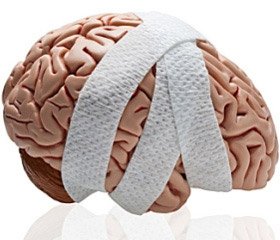Журнал «Медицина неотложных состояний» 1 (64) 2015
Вернуться к номеру
Indicators of fluid and electrolyte balance in patients with severe traumatic brain injury
Авторы: O.G. Kramareva, L.V. Zhrzheblovska, I.R. Malish
Рубрики: Медицина неотложных состояний
Разделы: Клинические исследования
Версия для печати
Introduction
One of the main methods of intensive therapy patients with intracranial hemorrhage, in critical condition, is volemic support. (Bentsen G., Breivik H., Lundar T.) At the present stage of intensive care basic solution for infusion therapy in patients with severe traumatic brain injury (TBI) is sodium chloride 0.9 %, while the correction of brain edema in addition to the use of analog-sedation, elevated position the head end of the bed, carried out by administering sodium chloride 3 % (Segal J. B., Blasco-Colmenares E., Norris E. J.). Maintain adequate water status and support required plasma osmolarity is the key to intensive care patients with severe TBI, but use for this purpose unbalanced solutions containing chlorine and sodium, which is much higher than physiological and complete absence in their composition of organic anions usually leads to significant violations fluid and electrolyte ratio imbalance and content in serum cations Na +, K +, Ca2 +, anions Cl-, HCO3- buffers of blood (Stummer W.).
Objective: to study the dynamics of changes of Na +, K +, Ca2 +, Cl-, HCO3-, BE in patients with severe head injury during the first 10 days of treatment during treatment with traditional strategies infusion support.
Materials and Methods
The study involved 30 patients with severe head injury that were treated in the intensive care unit of Kyiv City Clinical Emergency Hospital aged 18 to 65 years, with a level of consciousness on a scale of 5-11 points com Glasgow and 12 hours after an initial resustsytations and severity on a scale APACHE II — 21 ± 2,7 points. All victims held therapy infusion sodium chloride 0.9 % by the conventional method at a dose of 24.1 — 65.4 ml / kg / day, depending on the rate of urine output, severity hyperthermia, loss of gastral tube, presence diarrhea, loss on prespiration and under the control of a central venous pressure. Correction of brain edema was performed sodium chloride 3 % at a dose of 3 12 ml / kg / day. All injured were determined indicators Na +, K +, Ca2 +, Cl-, HCO3-, BE during the first 10 days of stay in the ICU.
Results and Discussion
We have found that sodium levels increased significantly since the third day of treatment and exceeds the reference value by almost 15 %, which of course results in increased plasma hyperosmolarity. During the whole period of treatment in patients have decreased by 11.1 % -33.8 % compared with the reference values of potassium, which can cause muscle weakness, intestinal motility disorders, hypertension and abdominal development as a result of a longer recovery period and longer terms stay patients on mechanical ventilation. Hypocalcemia is also stored for 10 days of treatment, and the figure decreased by 1.7 % -48.3 % compared with the reference values throughout the study period. This figure is particularly important for patients with hemorrhagic foci faces. Calcium is a cation that is directly involved in providing hemostasis, so it is deficient in blood may increase the foci of hemorrhagic contusion of the brain, thus necessitate surgical treatment and the general deterioration of the patient prognosis (S.V.Tsarenko). Since the second day of treatment all patients experienced severe hyperchloremia. This rate is increased by 17 % — 29 % during the study period. This is particularly important as chloride anions cause damaging effects on renal function (A.A. Starchenko). During our study showed a reduction in buffer bases on the first, eighth and ninth day of treatment by 87 %, 100 %, 100 % respectively compared with the reference values. As you know, reduce it is a risk factor for metabolic acidosis with compensatory respiratory alkalosis.
Conclusions
1. In the study of indicators of water and electrolyte metabolism in patients with severe head injury against the backdrop of a standard infusion therapy sodium level increased by 9 % -14.8 % compared with the reference values, starting from the third day of treatment, causing hiperosmolarity of plasma.
2. The content of serum potassium is reduced by 11.1 % -33.8 % compared with the reference value during the treatment period can cause muscle weakness and long term stay of patients on mechanical ventilation.
3. The level of serum calcium is reduced by 1.7 % -48.3 % throughout the study period, which may result in inadequate hemostasis in patients with hemorrhagic foci contusion of the brain and lead to the need for surgical intervention.
4. The level of chloride in serum during the treatment period exceeded 17 % — 29 % reference value, and may cause kidney damage and lead to the development of compensatory respiratory alkalosis, which initiates the development of vasospasm, significantly worsens the prognosis of neurological recovery and increased mortality in patients with severe traumatic brain injury.
5. The resulting data of our study indicate that fluid resuscitation in patients with severe TBI needs improvement and modification through the use of balanced crystalloid izoosmolyarity solutions.тяжка черепно-мозкова травма (ЧМТ), волемічна підтримка, гемодинаміка, перфузія головного мозку, набряк головного мозку.

